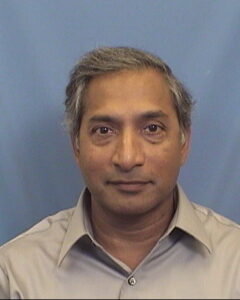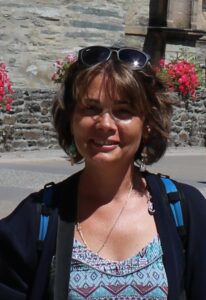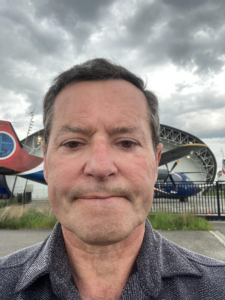
SafeComp 2023 is pleased to present three distinguished invited speakers and offer attendees a unique opportunity to learn from their insights and experience.

SRI International Computer Science Laboratory, USA
Slides available here.
Dr. Natarajan Shankar is a Distinguished Senior Scientist and SRI Fellow at the SRI Computer Science Laboratory. He received a B.Tech. degree in Electrical Engineering from the Indian Institute of Technology, Madras, and Ph.D. in Computer Science from the University of Texas at Austin. He is the author of the book, “Metamathematics, Machines, and Godel’s Proof”, published by Cambridge University Press. Dr. Shankar is the co-developer of a number of technologies including the PVS interactive proof assistant, the SAL model checker, and the Yices SMT solver. He is a co-recipient of the 2012 CAV Award and the recipient of the 2022 Herbrand Award.
The versatility and flexibility of software makes it an indispensable tool for building critical systems, but its inherent complexity opens up vulnerabilities that can compromise safety and security. Software failures due to design flaws and bugs in software can be costly. These flaws are especially expensive to fix once the
software has been deployed. Safety-critical software systems need assurance that the software operates safely and securely prior to deployment. Such systems must therefore be designed with rigorous claims supported by reliable, reproducible, and maintainable evidence. We motivate the need for constructing software hand-in-hand with an assurance argument supporting the critical safety and security claims. We describe some technologies that we have been developing to assist
with design for certification. Specifically, we outline the “efficient argument” approach to system design, the use of formal architectures as a foundation for efficient compositional arguments, ontic type analysis linking the requirements ontology to code-level representations, automatic code generation from high-level
specifications, and the Evidential Tool Bus (ETB) architecture for integrating evidence-generating tools within a design workflow for building and maintaining assurance arguments. The talk presents joint work with members of the DesCert (Design for Certification) team.

Université Paris Cité, France
Slides available here.
An alumnus of the Scuola Normale Superiore di Pisa, with a PhD in Computer Science from the University of Pisa, Roberto Di Cosmo was associate professor for almost a decade at Ecole Normale Supérieure in Paris. In 1999, he became a Computer Science full professor at University Paris Diderot, where he was head of doctoral studies for Computer Science from 2004 to 2009. President of the board of trustees and scientific advisory board of the IMDEA Software institute and chair of the Software chapter of the National Committee for Open Science in France, he is currently on leave at Inria.
His research activity spans theoretical computing, functional programming, parallel and distributed programming, the semantics of programming languages, type systems, rewriting and linear logic, and, more recently, the new scientific problems posed by the general adoption of Free Software, with a particular focus on static analysis of large software collections. He has published over 20 international journals articles and 50 international conference articles.
In 2008, he has created and coordinated the european research project Mancoosi, that had a budget of 4.4Me and brought together 10 partners to improve the quality of package-based open source software systems.
Following the evolution of our society under the impact of IT with great interest, he is a long term Free Software advocate, contributing to its adoption since 1998 with the best-seller Hijacking the world, seminars, articles and software. He created in October 2007 the Free Software thematic group of Systematic, that helped fund over 50 Open Source research and development collaborative projects for a consolidated budget of over 200Me. From 2010 to 2018, he was director of IRILL, a research structure dedicated to Free and Open Source Software quality.
He created in 2015, and now directs Software Heritage, an initiative to build the universal archive of all the source code publicly available, in partnership with UNESCO.
Software security is a broad and well established domain, with many research projects and industry products focusing on the traditional goal of detecting, and possibly fixing, vulnerabilities present in a specific software code base. Open Source has brought a new dimension into play: by making available large amounts of software components, developed and distributed collaboratively across the world, it has immensely sped up innovation, but also raised key challenges about the quality, evolution and security of what is today called the “software supply chain” of modern software systems, where many components from disparate origins are put together.
How can we search for vulnerabilities among millions of software projects? How can we track their propagation? How can one make sure that the source code of a key module used today will be still there when it is needed in the future? Do we really know what source code we are using, and where it comes from (the Know Your Software principle)? how can we adress cybersecurity if we do not know? How do we share this information across the software supply chain? Answering these questions and answering them at scale is quite a challenge.
In this presentation, you will discover Software Heritage, an open non-profit initiative, in partnership with Unesco and supported by major IT players, and how the revolutionary infrastructure it is building offers great opportunities to change the way we address these issues. With more than 15 billions unique source files from more than 220 million repositories, it is the largest archive of source code ever built, and you can already access and use it for a variety of purposes.

Emmanuelle ESCORIHUELA
As AI transformation Leader for A/C systems at Airbus Commercial, I am leading the Artificial Intelligence Roadmap for our Center of Competence. My main accountabilities are to define and steer the strategy and the tactical plan of AI in terms of products and services applications, certification and embeddability, use of AI in our A/C design activities, to steer the plan for competences ramp-up and to set-up partnerships and collaborations. I am an active member of the standardization group SAE G-34 & WG-114 on Machine Learning and AI. I have been working at Airbus Commercial Design Office for almost 20 years where I have been involved in systems development, systems and multi-systems architecture, integration and V&V, support to production, for almost all Airbus programs. I have a degree as an Electrotechnical Engineer from French Engineering School ENSEM and a Master’s degree in Electrical Engineering from Kansas State University.

Gary BROWN
As an Advanced Aircraft Safety Specialist at Airbus Commercial, I have a significant experience with over 23 years dedicated to safety development of aviation products, including military helicopters, fast jets and propeller prop platforms and associated weapons. Then for commercial products, I have been involved in novel products like the Airship adventure, to support the introduction of Artificial Intelligence Machine Learning (AI ML) at Airbus future adaptations, I am a member of SAE G-34 & WG-114. I have the secretary role of the SG-34. I have performed the role of Aircraft Safety Director on the Airbus own Beluga XL development and as the Aircraft Safety Manager on the A400M. I am a Chartered Engineer with a Masters Degree with Distinction in Safety Critical Engineering – University of York. I provide internal and external safety training. Externally, at Cranfield University for AI ML, Original Equipment Manufacturer (OEM) and UERF Particular Risk.
In recent years, Airbus has approached Artificial Intelligence considering the way this technology, and more specifically Machine Learning, was providing new valuable functionalities wrt aircraft operations, functionalities that traditional rule-based software would be less performant in achieving, if even possible.
At present, the Machine Learning techniques encompassed for airborne applications are strictly limited to offline ML supervised techniques. These techniques introduce a change of design paradigm. But this change shall comply with the highest levels of safety standard and airworthiness requirements Airbus is committed to, while securing the integration of the product in its operating environment. Our talk will focus on explaining how the three fundamental pillars Certification Use Reliance shall serve as the backbone to connect Machine Learning Constituent Development to A/C Safety and Certification.